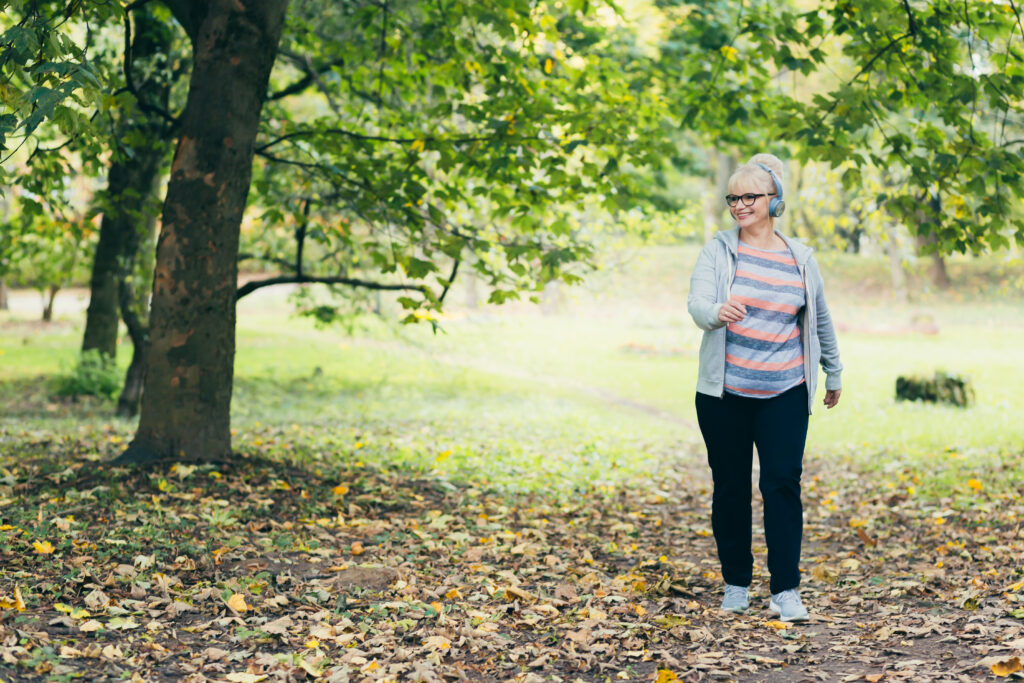
Temperatures are on the rise and people living with arthritis may start to notice some changes in how their joints feel. Whether living with osteoarthritis, rheumatoid arthritis, or another type of chronic joint condition, understanding how weather changes affect arthritis pain—and how to manage it—can help you stay active and feel your best.

In this blog, we’ll cover key areas to help you reduce arthritis pain, improve mobility, and maintain a healthy, active lifestyle:
What Is Arthritis?
Arthritis is a common condition that causes inflammation in the joints, leading to pain, stiffness and swelling. The three most common types of arthritis include:
- Osteoarthritis (OA): Caused by wear and tear on joint cartilage.
- Rheumatoid Arthritis (RA): An autoimmune disease where the immune system attacks healthy joint tissue.
- Psoriatic Arthritis: Affects people with psoriasis, a common skin condition. Key aspects of psoriatic arthritis are autoimmune diseases, joint pain and inflammation in the joints.
Common symptoms of arthritis include joint pain and stiffness, swollen joints, reduced range of motion and fatigue. These symptoms can be experienced in one or more joints and may be accompanied by redness, warmth and tenderness. Understanding the type of arthritis you have is the first step toward managing it effectively—especially as the seasons change. While arthritis is often thought of as a “cold weather” condition, many people report flare-ups during the summer months as well.
How Does Warm Weather Affect Arthritis?
For some individuals, warmer weather may ease arthritis pain, while others notice an increase in stiffness or discomfort. A few common ways that warm weather impacts arthritis include:
- Barometric pressure changes: Makes joints feel more swollen or sensitive. Fluctuations in barometric pressure can cause joint tissues to expand or contract, leading to increased pain or stiffness.
- High humidity: Increases stiffness and inflammation, especially in people with autoimmune forms of arthritis.
- Hot temperatures: Can lead to dehydration and may exacerbate joint pain or cramping.
In some cases, sunlight and warmth can promote circulation and muscle relaxation, which can make movement easier in the body. Keeping a symptom journal can help individuals track how the body responds to different weather conditions. With that knowledge, it is possible to tweak routines to match what the body’s joints need most.
How to Reduce Arthritis Pain and Stay Active in Summer
Staying active is one of the most effective ways to relieve joint pain naturally and improve overall joint health during summer months. In warmer weather, it is especially important to choose arthritis-friendly exercises and habits that support the body. This can include low-impact activities like walking, swimming, cycling and water aerobics. These are all excellent options that minimize stress on the joints and keep your body moving. A common goal is to aim for at least 20–30 minutes of physical activity per day, five days a week.
In addition to regular movement, incorporating gentle mobility exercises and light resistance training can help improve flexibility and strengthen the muscles that support joints. Applying heat – such as a warm towel or heating pad—before exercising can help loosen stiff joints, and using a cold pack afterward may reduce inflammation and discomfort.
Staying well hydrated is also crucial, especially in hot weather. It is important to drink plenty of water and eat anti-inflammatory foods like leafy greens, berries, fatty fish (such as salmon), nuts and olive oil to support joint health.
Wearing supportive gear is essential for managing arthritis symptoms and maintaining joint health. This includes choosing proper footwear and using braces or compression sleeves when needed, as they can provide extra stability and reduce strain on your joints throughout the day.
Incorporating these supportive measures into your daily routine can help alleviate discomfort and promote joint health, enabling individuals to stay active and comfortable throughout the day.
When to See a Doctor for Arthritis Pain
In some cases, it is important to visit your healthcare provider to manage arthritis pain. Persistent joint pain, swelling that does not diminish, and stiffness interfering with daily activities are indicators that professional medical evaluation is necessary. These symptoms may signal underlying conditions such as osteoarthritis or rheumatoid arthritis, which require timely diagnosis and management to prevent further joint damage.
Healthcare providers can offer a comprehensive diagnosis and discuss various treatment options tailored to individual needs. These may include physical or occupational therapy to enhance joint function and mobility, prescription medications to control inflammation, corticosteroid injections for short-term relief, and, in some cases, referrals to specialists like rheumatologists or orthopedic doctors.
Early intervention is crucial in managing joint health effectively. Addressing these issues promptly can prevent further joint damage, improve quality of life and help maintain independence in daily activities.
Conclusion
Managing arthritis in warmer weather doesn’t have to be a struggle. With the right combination of exercise, hydration, joint care, and professional support, it is possible to reduce discomfort, increase energy and stay mobile all season long.
If you’re looking for more ways to manage your arthritis symptoms, talk to your doctor about creating a personalized treatment plan that supports your health goals.
###
